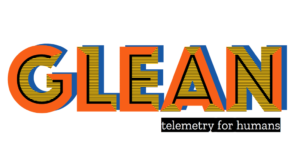(“This Week in Glean” is a series of blog posts that the Glean Team at Mozilla is using to try to communicate better about our work. They could be release notes, documentation, hopes, dreams, or whatever: so long as it is inspired by Glean. You can find an index of all TWiG posts online.)
This blog post is going to be a bit different from what you may have read from me in the past. Usually I write about things I am working on or things I have encountered while working that I find interesting. This is still a post about something I find interesting, but instead of directly related to the things I’ve been working on, it’s about something that Mozilla actively encourages me to do: furthering my knowledge and professional development. In this instance, I chose to read a book on Rust to try and increase my knowledge and fill in any gaps in my understanding of a programming language I use almost every day and have come to really enjoy working with. The book in question is Rust in Action by Tim McNamara.
The first thing I would like to call out is the great organization of the material in the book. The first few chapters go over a lot of basic material that was perfect for a beginner to Rust, but which I felt that I was already reasonably familiar with. So, I was able to skim over a few chapters and land at just the right point where I felt comfortable with my knowledge and start reading up on the things I was ready to learn more about. This happened to be right around the end of Part 1 with the bits about lifetimes and borrowing. I have been using Rust long enough to understand a lot of how this works, but learning some of the general strategies to help deal with ownership issues was helpful, especially thinking about wrapping data in types designed to aid in movement issues.
Being an especially data oriented person, I took extra enjoyment out of the “Data in depth” chapter. Having done quite a bit of embedded software development in the past, the explanation of endianness brought back some memories of some not-so-portable code that would break because of this. The rest of the chapter was filled with bit by bit explanations of types and how they represented data in memory, op-codes, and other intricacies of thinking about data at a very low level. Definitely one of my favorite chapters in the book!
I found that the other chapters that stood out to me did so because they explained a topic such as Networking (chapter 8) or Time (chapter 9) in the context of Rust. These were things I had worked with in the past with other languages and that recognition allowed the approaches that were being explained in Rust to really sink in. Examples of patterns like sending raw TCP data and formatting of timestamps were interrupted with concepts like traits and ways to improve error handling at just the right times to explain Rust approaches to them.
I would definitely recommend this book to anyone who is interested in learning more about Rust, especially how that applies to “systems” programming. I feel like I have come away from this with a better understanding of a few things that were still a little fuzzy and I learned quite a bit about threading in Rust that I really hadn’t been exposed to before. We continue to rely on Rust to write our services in a cross-platform way and there is a lot of information and techniques in this book that I can directly apply to the real-world problems I face working on data and experimentation tools here at Mozilla.
All in all, a really enjoyable book with fun examples to work through. Thanks to the author, and to Mozilla for encouraging me to continually improve myself.












